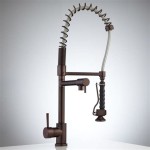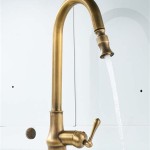When it comes to kitchen sinks, there are a lot of factors to consider, from style and design to the type of material used. Another key element that should not be overlooked is the drain size. Having the right drain size for your sink can make the difference between an efficient, hassle-free kitchen and one that is constantly clogged or overflowing.
What is the Standard Drain Size for a Kitchen Sink?
The standard drain size for a kitchen sink is usually 3.5 inches in diameter. This size is typically found in most new sinks and is the size of the pre-drilled holes in the countertop. However, this size can vary depending on the design and style of the sink.
What Factors Should be Considered When Choosing a Kitchen Sink Drain Size?
When selecting a kitchen sink drain size, it’s important to consider the size of the sink bowl and the type of material used. For example, a stainless steel sink typically requires a larger drain size of 4 inches, while a porcelain sink may need a 2.5-inch drain size. Additionally, the size and number of faucets in the sink should also be taken into account.
What Are the Benefits of a Larger Drain Size?
Having a larger drain size in your kitchen sink can provide several benefits. A larger drain size can help reduce clogs and slow draining, as it allows more water to pass through the drain. Additionally, larger drains are better at handling large pieces of food, such as potato peels or celery stalks, that can easily clog up a smaller drain. Finally, larger drains can also help reduce the water level in the sink, which can help reduce the risk of overflowing.
What Are the Drawbacks of a Larger Drain Size?
While there are many benefits to having a larger drain size in your kitchen sink, there are also some drawbacks. The largest drawback is cost, as larger drains are typically more expensive than smaller ones. Additionally, a larger drain size may require more maintenance, as it can be more susceptible to clogs. Finally, a larger drain size can take up more space in the sink, which can be a problem if you have a small sink.
Conclusion
When it comes to selecting the right drain size for your kitchen sink, it’s important to consider the size of the sink bowl, the type of material used, and the number of faucets in the sink. A larger drain size can provide several benefits, but it may come with higher costs and increased maintenance. With careful consideration, you can find the perfect drain size for your kitchen sink.














Related Posts








